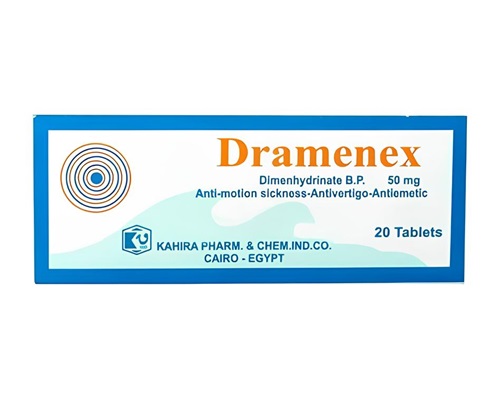Description
Tradename:
Depakin Chrono
Compound:
Each tablet contains:
Sodium valproate 333 mg.
Valproic acid 145 mg.
Auxiliary components:
silicon dioxide, hypromellose, ethylcellulose, sodium saccharinate, colloidal silicon dioxide, Opadry II white, polyvinyl alcohol, macrogol, talc, titanium dioxide.
Properties:
Antiepileptic drug. It is believed that the mechanism of action is associated with an increase in the content of GABA in the central nervous system, which is due to inhibition of GABA transaminase, as well as a decrease in the reuptake of GABA in brain tissue. This apparently leads to a decrease in excitability and convulsive readiness of the motor areas of the brain. Helps improve the mental state and mood of patients.
Indications:
Epileptic seizures: generalized, focal (focal, partial) with simple and complex symptoms, minor. Convulsive syndrome in organic brain diseases.
Directions for use and dosage:
The method of administration and dosage regimen of a particular drug depend on its release form and other factors. The optimal dosage regimen is determined by the doctor. The compliance of the dosage form of a particular drug with the indications for use and dosage regimen should be strictly observed.
The average daily dose is 1-2 doses per day with meals. Do not stop taking the tablets without consulting your doctor.
Contraindications:
Severe liver dysfunction; severe pancreatic dysfunction; porphyria; hemorrhagic diathesis; severe thrombocytopenia; I trimester of pregnancy; lactation (breastfeeding); hypersensitivity to valproic acid.
Precautionary measures:
Use with caution in patients with pathological changes in the blood, organic brain diseases, a history of liver disease, hypoproteinemia, and renal dysfunction.
Side effects:
From the side of the central nervous system: possible trembling of the hands or arms; rarely – changes in behavior, mood or mental state, diplopia, nystagmus, spots before the eyes, incoordination, dizziness, drowsiness, headache, unusual agitation, restlessness or irritability.
From the digestive system: possible mild cramps in the abdomen or in the stomach area, loss of appetite, diarrhea, digestive disorders, nausea, vomiting; rarely – constipation, pancreatitis.
From the blood coagulation system: thrombocytopenia, prolongation of bleeding time.
Metabolic: unusual decrease or increase in body weight.
From the gynecological status: menstrual irregularities.
Dermatological reactions: alopecia.
Allergic reactions: skin rash.
Storage method:
In a cool, dry place at a temperature not exceeding 25 degrees.
Compound:
Each tablet contains:
Sodium valproate 333 mg.
Valproic acid 145 mg.
Auxiliary components:
silicon dioxide, hypromellose, ethylcellulose, sodium saccharinate, colloidal silicon dioxide, Opadry II white, polyvinyl alcohol, macrogol, talc, titanium dioxide.
Properties:
Antiepileptic drug. It is believed that the mechanism of action is associated with an increase in the content of GABA in the central nervous system, which is due to inhibition of GABA transaminase, as well as a decrease in the reuptake of GABA in brain tissue. This apparently leads to a decrease in excitability and convulsive readiness of the motor areas of the brain. Helps improve the mental state and mood of patients.
Indications:
Epileptic seizures: generalized, focal (focal, partial) with simple and complex symptoms, minor. Convulsive syndrome in organic brain diseases.
Directions for use and dosage:
The method of administration and dosage regimen of a particular drug depend on its release form and other factors. The optimal dosage regimen is determined by the doctor. The compliance of the dosage form of a particular drug with the indications for use and dosage regimen should be strictly observed.
The average daily dose is 1-2 doses per day with meals. Do not stop taking the tablets without consulting your doctor.
Contraindications:
Severe liver dysfunction; severe pancreatic dysfunction; porphyria; hemorrhagic diathesis; severe thrombocytopenia; I trimester of pregnancy; lactation (breastfeeding); hypersensitivity to valproic acid.
Precautionary measures:
Use with caution in patients with pathological changes in the blood, organic brain diseases, a history of liver disease, hypoproteinemia, and renal dysfunction.
Side effects:
From the side of the central nervous system: possible trembling of the hands or arms; rarely – changes in behavior, mood or mental state, diplopia, nystagmus, spots before the eyes, incoordination, dizziness, drowsiness, headache, unusual agitation, restlessness or irritability.
From the digestive system: possible mild cramps in the abdomen or in the stomach area, loss of appetite, diarrhea, digestive disorders, nausea, vomiting; rarely – constipation, pancreatitis.
From the blood coagulation system: thrombocytopenia, prolongation of bleeding time.
Metabolic: unusual decrease or increase in body weight.
From the gynecological status: menstrual irregularities.
Dermatological reactions: alopecia.
Allergic reactions: skin rash.
Storage method:
In a cool, dry place at a temperature not exceeding 25 degrees.









